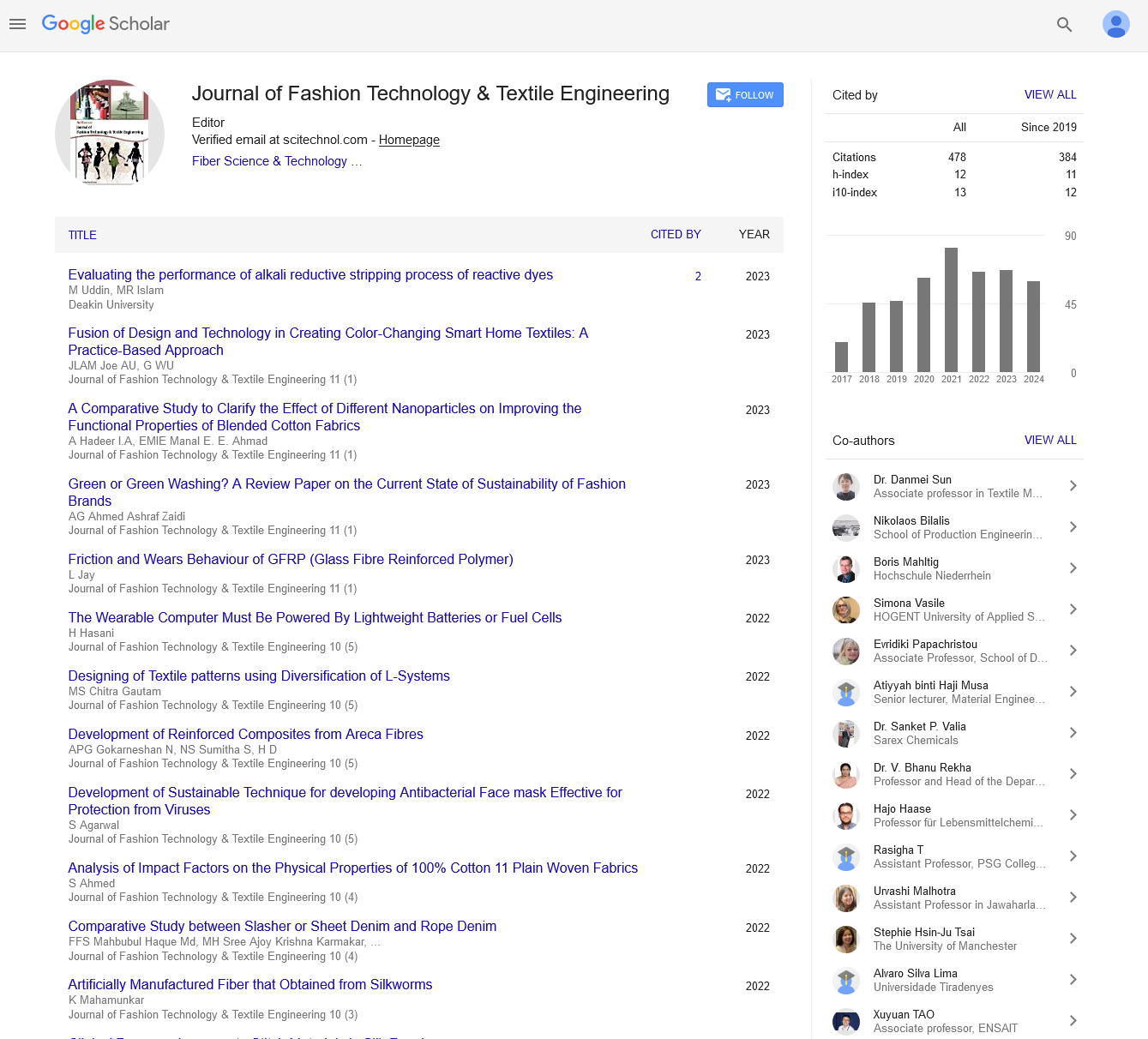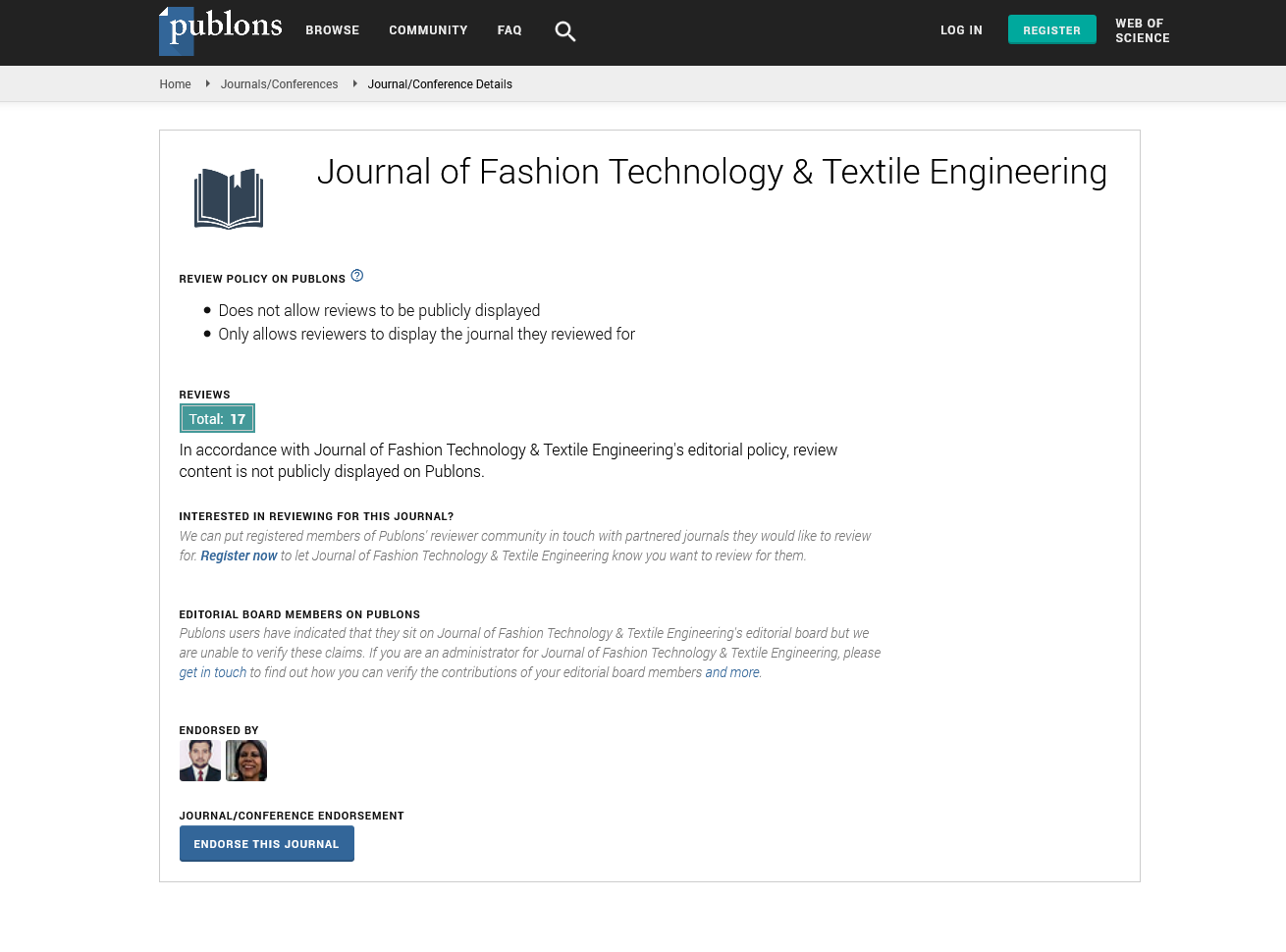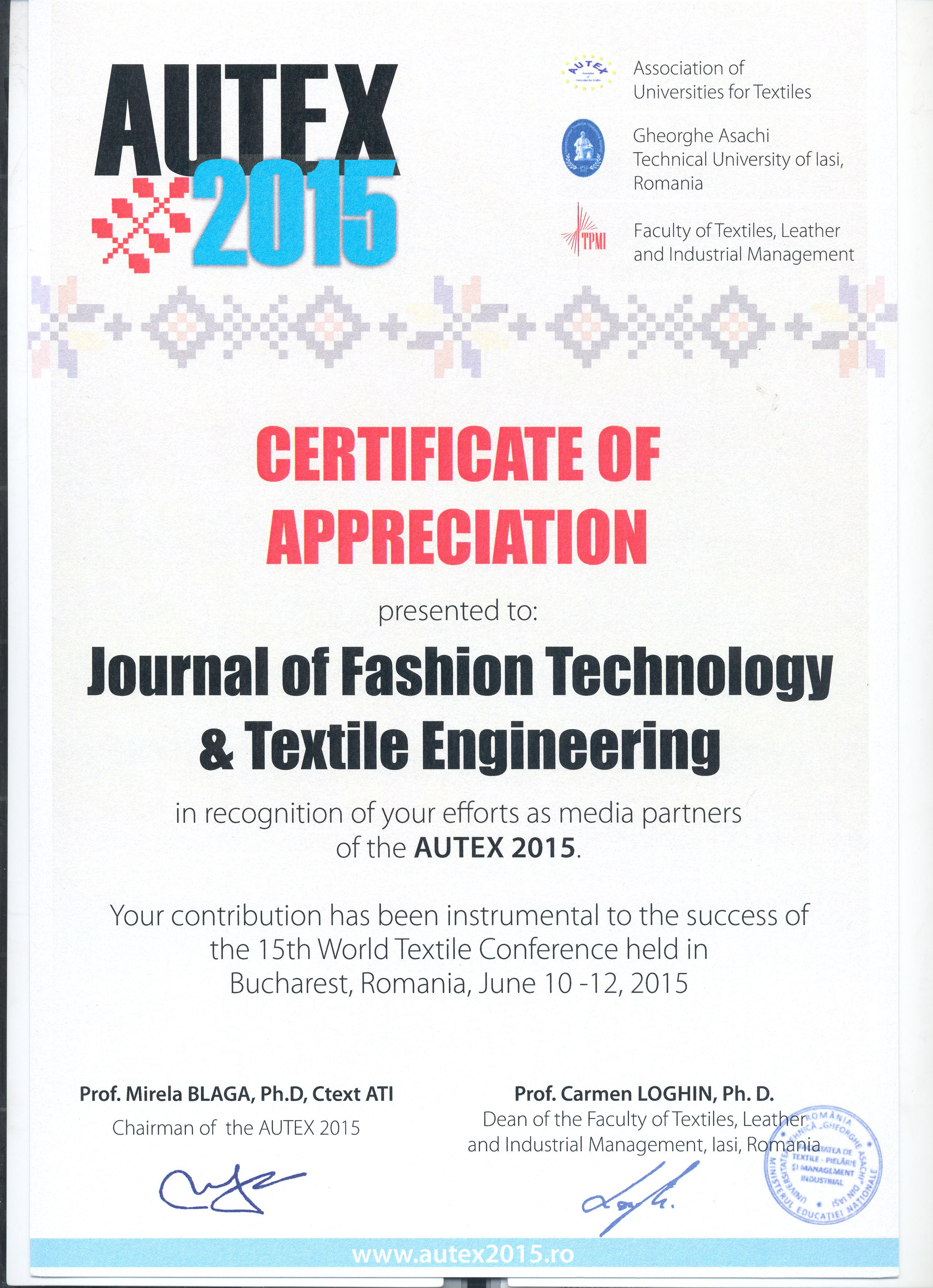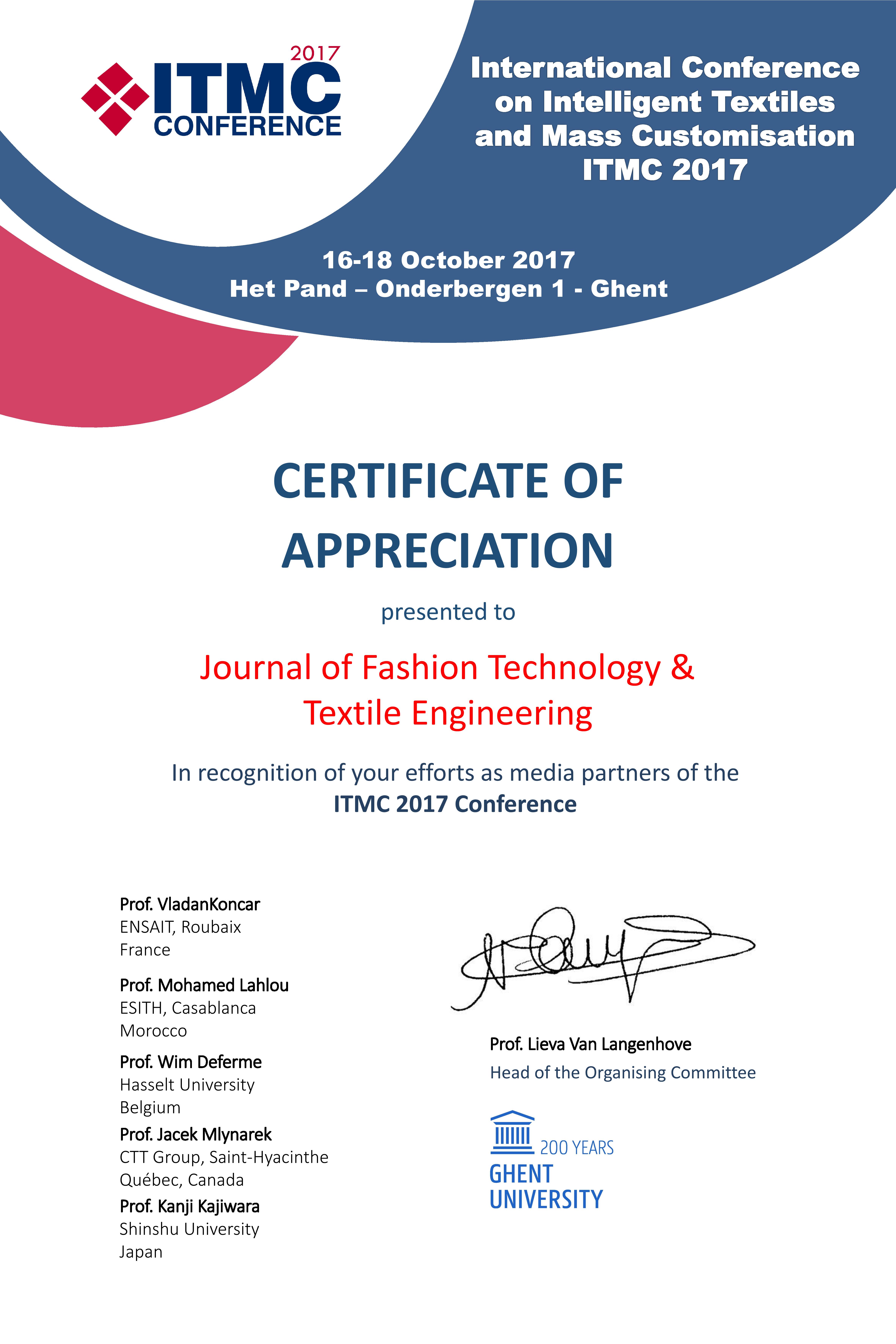Opinion Article, J Fashion Technol Textile Vol: 12 Issue: 5
Digital Twins in Fashion Supply Chains: Enhancing Efficiency and Reducing Waste
Soojin Park*
1Department of Clothing and Textiles, Seoul National University, Seoul, South Korea
*Corresponding Author: Soojin Park,
Department of Clothing and Textiles, Seoul National University, Seoul, South
Korea
E-mail: mantonikolaidi@gmail.com
Received date: 23 September, 2024, Manuscript No. JFTTE-24-152106;
Editor assigned date: 25 September, 2024, PreQC No. JFTTE-24-152106 (PQ);
Reviewed date: 09 October, 2024, QC No. JFTTE-24-152106;
Revised date: 17 October, 2024, Manuscript No. JFTTE-24-152106 (R);
Published date: 25 October, 2024, DOI: 10.4172/2329-9568.1000375.
Citation: Park S (2024) Digital Twins in Fashion Supply Chains: Enhancing Efficiency and Reducing Waste. J Fashion Technol Textile 12:5.
Description
In recent years, the fashion industry has handled increasing pressure to simplify operations and reduce its environmental footprint. One of the technological advancements making a significant impact is the use of digital twins in fashion supply chains. Digital twins-virtual imitations of physical objects have recognized to be an effective tool for improving efficiency and minimizing waste in fashion production, distribution and retail. A digital twin is a dynamic, digital replica of a physical object or system that mirrors real-time data. In the context of the fashion industry, it involves producing virtual models of products, factories, or even entire supply chains. These models are linked to real-world counterparts, allowing businesses to simulate, analyze and optimize processes in a virtual environment before implementing changes in the physical world.
The fashion industry often has challenges related to overproduction, inaccurate demand estimating and excess inventory. By using digital twins, brands can simulate various production scenarios and assess how changes will impact inventory levels, production schedules and costs. Virtual models of products and materials allow designers to evaluate fabric choices, production techniques and styling options without having to produce physical prototypes, thus reducing material waste. Additionally, digital twins can be used to monitor manufacturing processes in real-time. For instance, the virtual twin of a factory can track the performance of machines, workers and workflows, providing vision into potential inefficiencies or bottlenecks. This allows businesses to take corrective actions in realtime, minimizing delays and optimizing production timelines.
A major concern in the fashion supply chain is the lack of transparency, which can lead to inefficiencies, delays and waste. Digital twins address this issue by providing an up-to-date, digital version of the entire supply chain, from raw materials to finished products. By providing a digital twin of the supply chain, businesses gain visibility into each step of the process, allowing them to track the movement of goods, monitor inventory levels and identify potential disruptions. For example, if a fashion brand experiences a delay in the arrival of materials, the digital twin can highlight this issue and enable the company to adjust production plans accordingly. This real-time data can also help businesses predict demand more accurately, reducing the risk of overproduction or stock outs.
The fashion industry is one of the largest contributors to waste and pollution, with unsold inventory, excess fabric and production inefficiencies contributing to the problem. Digital twins provide a solution by helping companies minimize waste throughout the supply chain. By simulating various production scenarios and adjusting designs based on real-time data, fashion brands can produce only what is needed, reducing overproduction and waste. Additionally, by optimizing transportation routes and logistics, companies can reduce the environmental impact associated with moving goods from one place to another.
Moreover, digital twins can assistance in the recycling process. Virtual models of fabrics and materials can help companies identify opportunities for reusing or repurposing materials that would otherwise be discarded. This contributes to a more sustainable fashion industry that reduces the need for new resources. Digital twins also enhance customer experience by enabling companies to provide better products and services. Through the use of virtual models, businesses can produce personalized experiences for customers, from virtual tryons to customized clothing designs. These innovations help to reduce returns, as customers are more likely to be satisfied with their purchases if they can see how products will fit and buying.
Conclusion
Additionally, digital twins allow companies to optimize inventory levels, ensuring that customers have access to the products they want without experiencing stock-outs. This leads to higher customer satisfaction and improved sales. The adoption of digital twins in fashion supply chains is a significant step towards making the industry more efficient and sustainable. By enhancing production processes, improving supply chain visibility, reducing waste and offering better customer experiences, digital twins help fashion brands navigate the challenges of today’s market. As the technology continues to evolve, it will undoubtedly play a key role in shaping the future of fashion.
 Spanish
Spanish  Chinese
Chinese  Russian
Russian  German
German  French
French  Japanese
Japanese  Portuguese
Portuguese  Hindi
Hindi 


